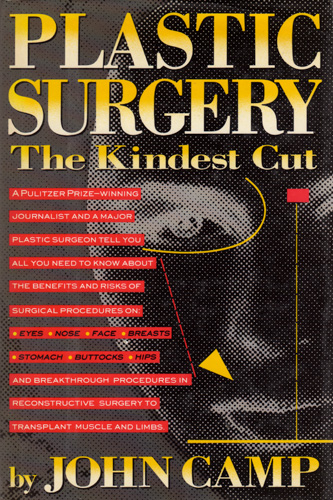Plastic Surgery:
The Kindest Cut

Appearance affects us from our earliest hours ("What a
beautiful baby") to our death ("He looks so natural"). How we are treated as
employees, professionals, lovers, and friends frequently has more to do with our
looks than with our IQ.
Every year more than half a million Americans — mostly women, but an
increasing proportion of men — avail themselves of board-certified
aesthetic surgery. Most are neither rich nor famous, just ordinary people who
are aware of the penalties of poor appearance. Plastic Surgery: The Kindest
Cut has been published to answer the needs of these individuals and the
hundreds of thousands more who need complete and authoritative (and unbiased)
information on this important subject. It is the works of a Pulitzer
Prize-winning journalist in collaboration with Bruce Cunningham, a distinguished
surgeon at the University of Minnesota. Cunningham's medical practice —
interactions with a broad variety of patients — is used to introduce the
reader to the risks and costs of each type of surgical procedure.
As John Camp writes, "In general, a plastic surgeon's work falls into two
broad categories: aesthetic repair and functional repair. Aesthetic repair
attempts to improve appearance that might otherwise fall near the limits of the
normal range. Rhinoplasties, facelifts, tummy tucks, breast enhancements, breast
reductions, and suction lipectomies . . . are examples. Functional repair fixes
human organs that don't work. The problem may be congenital or may have been
acquired in war, by accident, through other forms of violence, or from disease.
Breast reconstructions after cancer surgery fall into this category. Burn
repairs, which attempt to cover open wounds with new skin, are also in this
category." All of this work, aesthetic or reconstructive, has a common end.
Stated simply, it is to make people function better, feel better about
themselves. As one patient puts it, "I wanted to be happy about the way I look.
Not for anyone else, just for me."
ISBN 0-8050-0897-7
In Mexico: Cirugia plastica: El corte más amable
Editorial Diana, S.A., 1995
ISBN 968-13-2833-7
